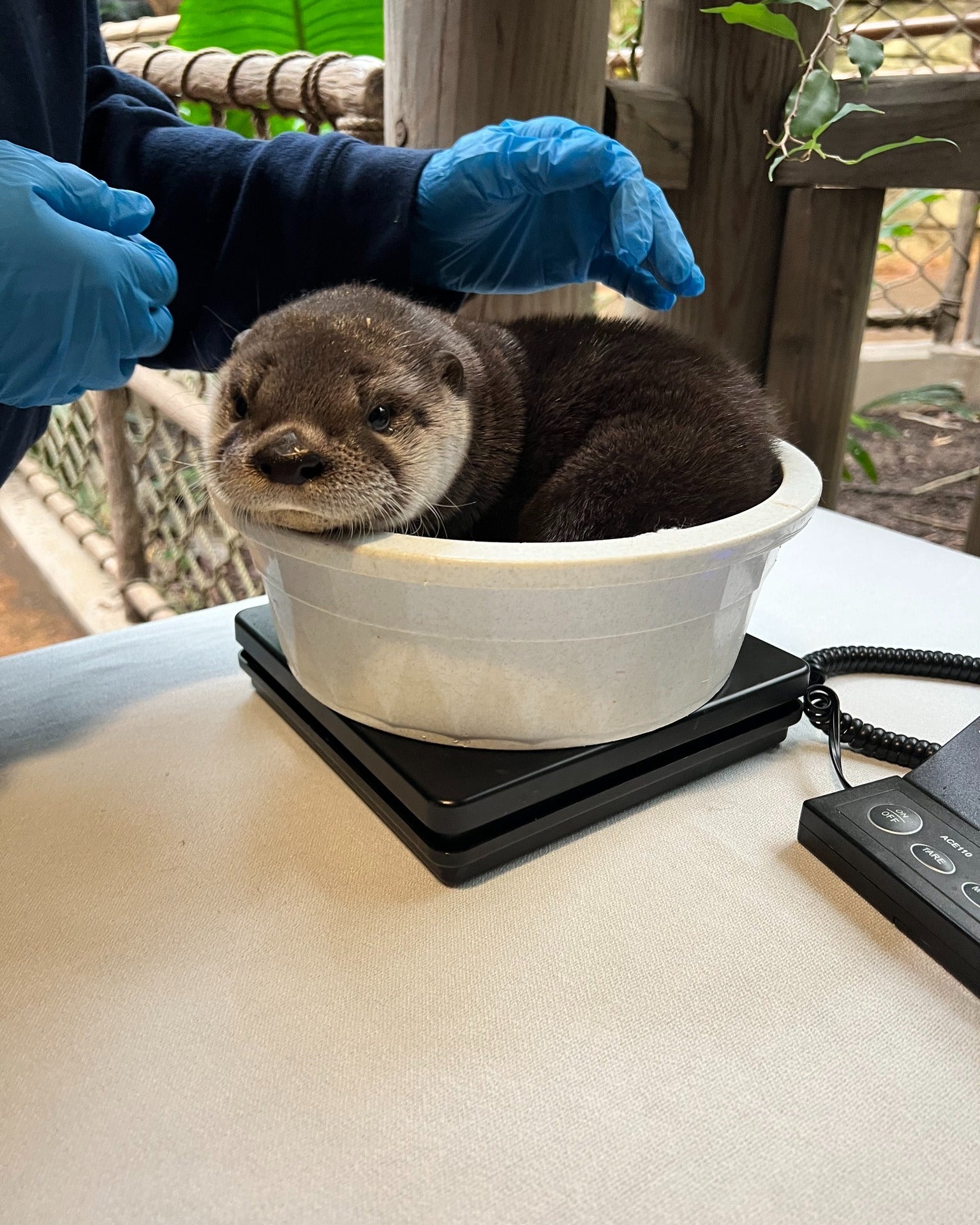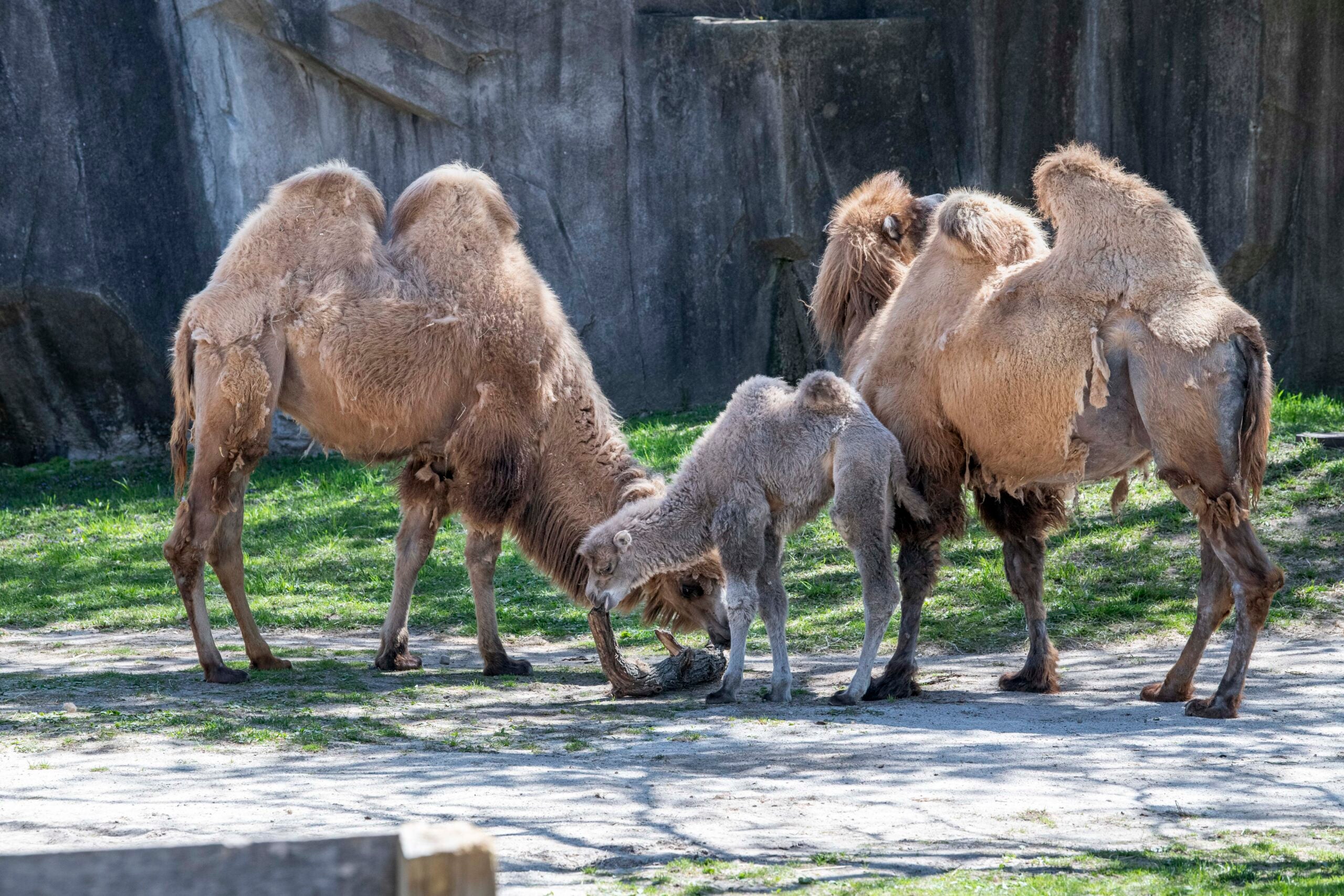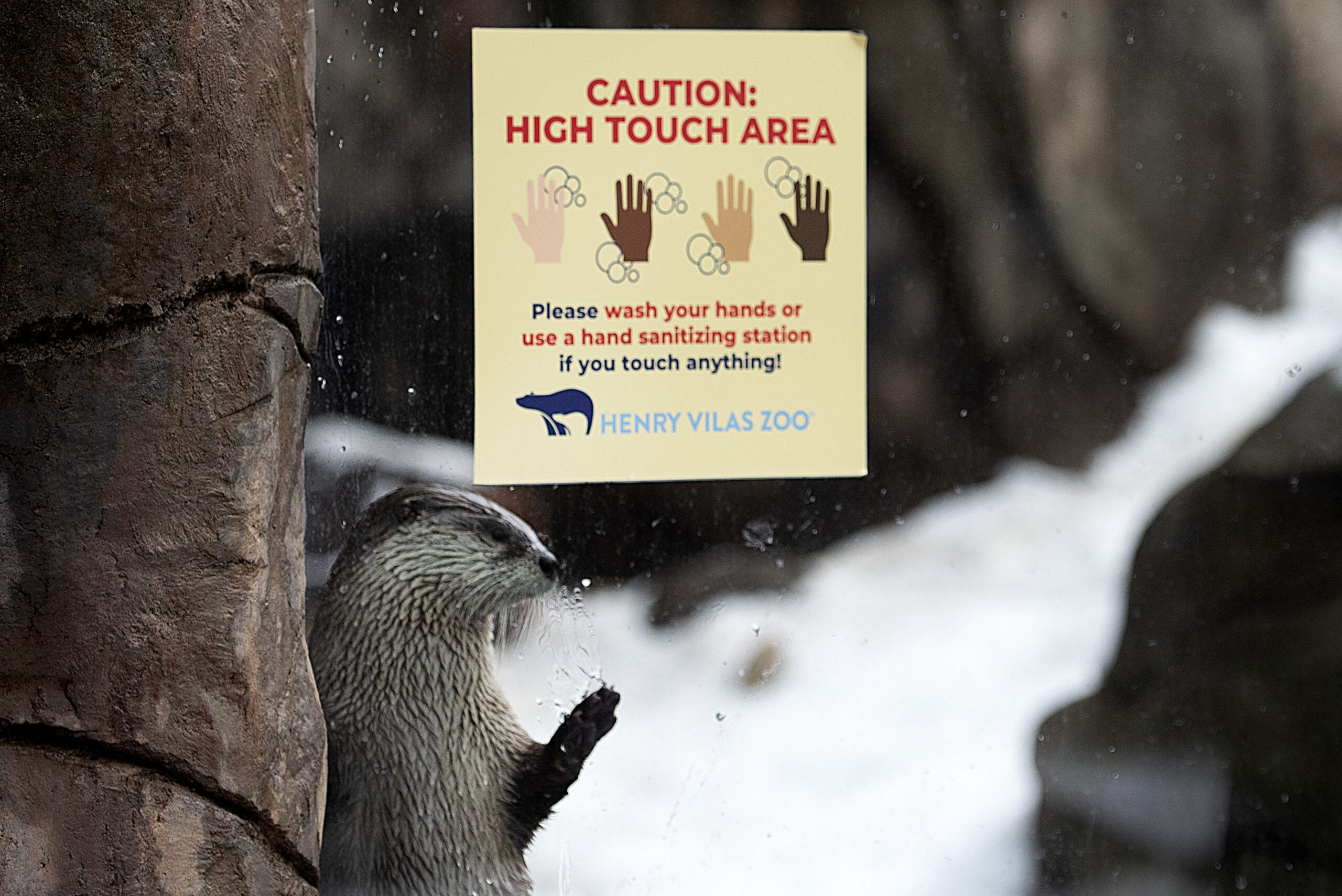Each spring, adorable babies join the thousands of animals living in zoos across Wisconsin.
WPR’s “Wisconsin Today” tracked down three zookeepers who welcomed to their grounds baby animals, including Canada lynx kittens, otters and a Bactrian camel.
How do the baby animals change in their first few months of life? What is unique about these specific species?
News with a little more humanity
WPR’s “Wisconsin Today” newsletter keeps you connected to the state you love without feeling overwhelmed. No paywall. No agenda. No corporate filter.
“Wisconsin Today” spoke with zookeepers at the NEW Zoo & Adventure Park near Green Bay, Henry Vilas Zoo in Madison and the Milwaukee County Zoo.
Here is what they had to say about baby camels, otters and kittens — oh my!
Baatar, the baby Bactrian camel
On Easter Sunday, Milwaukee County Zoo Bactrian camel Addie-Jean gave birth to 99-pound baby Baatar, which means “hero” in Mongolian.
The birth took about an hour, said Danielle Faucett, the winter quarters area supervisor at the Milwaukee County Zoo. As a defense mechanism to run from predators, baby Baatar was up and walking almost immediately.
Even if he was a bit clumsy.
When camels are born, their humps are completely deflated, Faucett said. The humps serve as fat reserves so camels can survive long periods without food or water. As they age and build fat, the humps grow.
Baatar will also gain adaptive features as he ages that would help him survive the cold desert climate of the Gobi Desert, where Bactrian camels originate. They have three eyelids to help protect their eyes from sand. They can also close their nostrils and preserve moisture by rarely sweating.
Ginger and Wasabi: 2 North American river otters
At the Henry Vilas Zoo in Madison, zookeeper Emily Callahan-Thompson was on watch for the birth of baby otters for 270 days. She never actually knows when the female otters are expecting.
“Otters do this awesome thing called delayed implantation,” Callahan-Thompson said.
“They just kind of pocket away their fertilized egg until they feel the time is right. And they can do that for up to 270 days,” she added. “So the birth window is huge.”
The team tries to prepare for the birth but has to be extremely flexible. One morning, staff will arrive and the energy of baby otter pups is in the air.
The baby otters, named Ginger and Wasabi, were born in February and learned to swim relatively quickly after birth.


Callahan-Thompson said her favorite moments were watching the mother teach the babies how to swim. Although otters are semiaquatic animals and can hold their breath underwater for eight minutes, when they are born they don’t know how to swim.
The mother would one by one take the pups by the scruff, do laps in the water, dunk their heads under, then put them on shore. She repeated the process with each pup for two or three weeks.
“She’s a great swim coach,” Callahan-Thompson said with a laugh.
Canada lynx kittens
The two Canada lynx kittens born in May at the NEW Zoo & Adventure Park near Green Bay just recently started opening their eyes.
“They’re adorable little balls of fluff,” said zoo director Carmen Murach.
It is the first litter of kittens for mother, Nova. She only leaves the nesting box to eat. She’s so protective, the baby kittens aren’t available to the viewing public until about July because Nova dislikes anyone else being near her kittens.
Murach said Canada lynx resemble house kittens. Right now, they mostly sleep and eat. By next month, they’ll be able to step outside the nest box and explore their habitat.
“And by the time they are 3 months, they’re trouble,” Murach said, laughing.
Unlike domestic kittens, Canada lynx are listed as a threatened species under the Endangered Species Act.
Murach said the Canada lynx populations are small and fragmented throughout parts of the U.S. and Canada. They need deep snow and a healthy forest to survive. They eat almost exclusively snowshoe hare. A warming climate has affected their habitat and the habitat of their prey.
Fortunately, Murach said these Canada lynx kittens have coniferous trees to climb at the zoo, and hopefully by August, they’ll enjoy running around their habitat.



